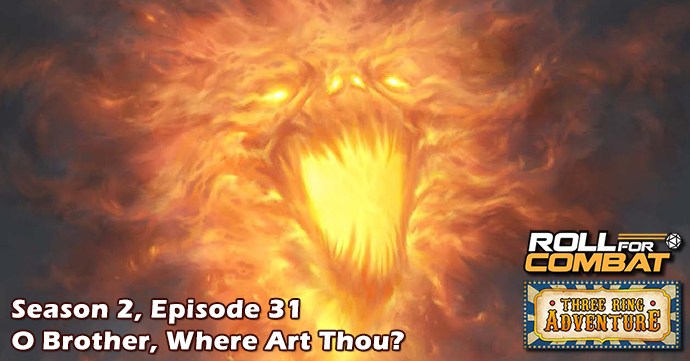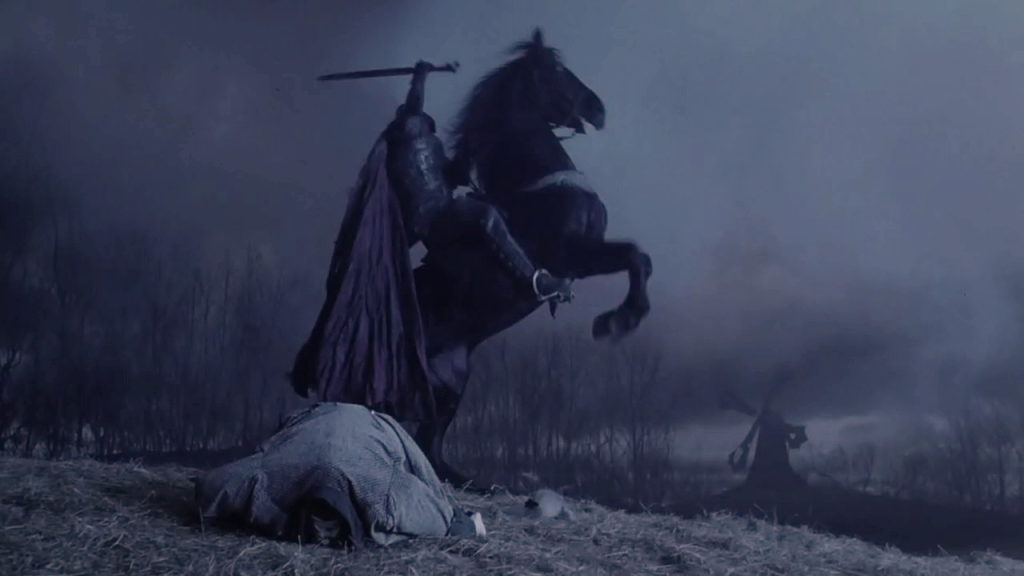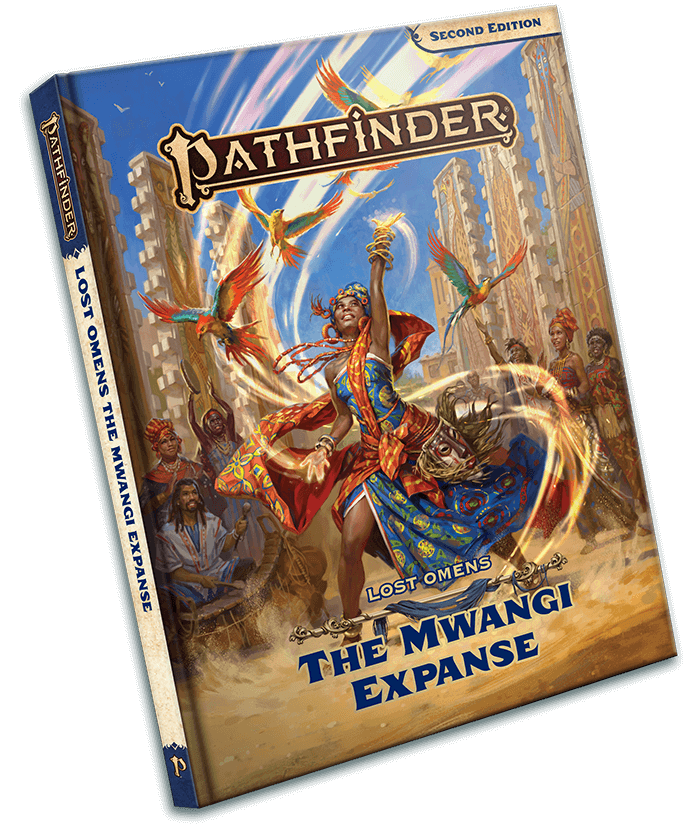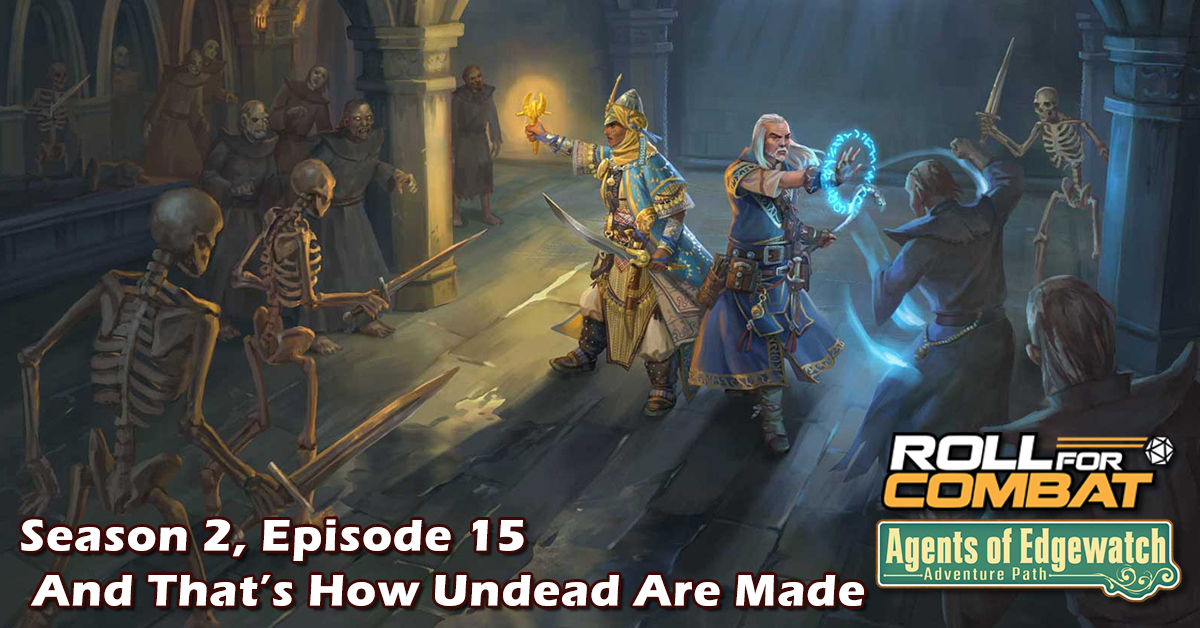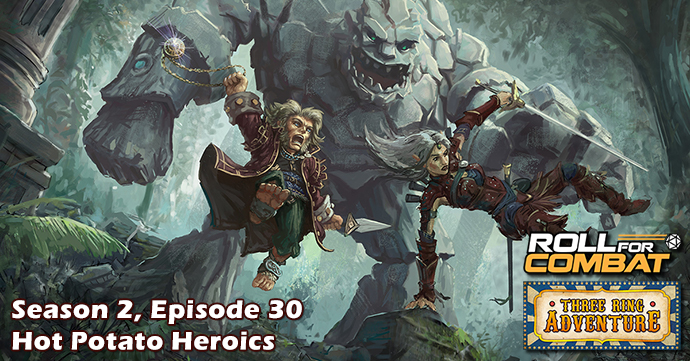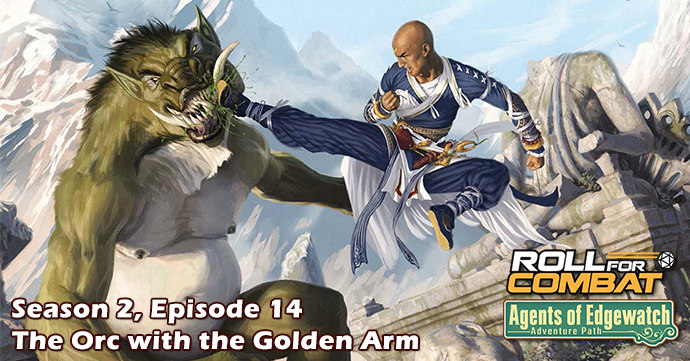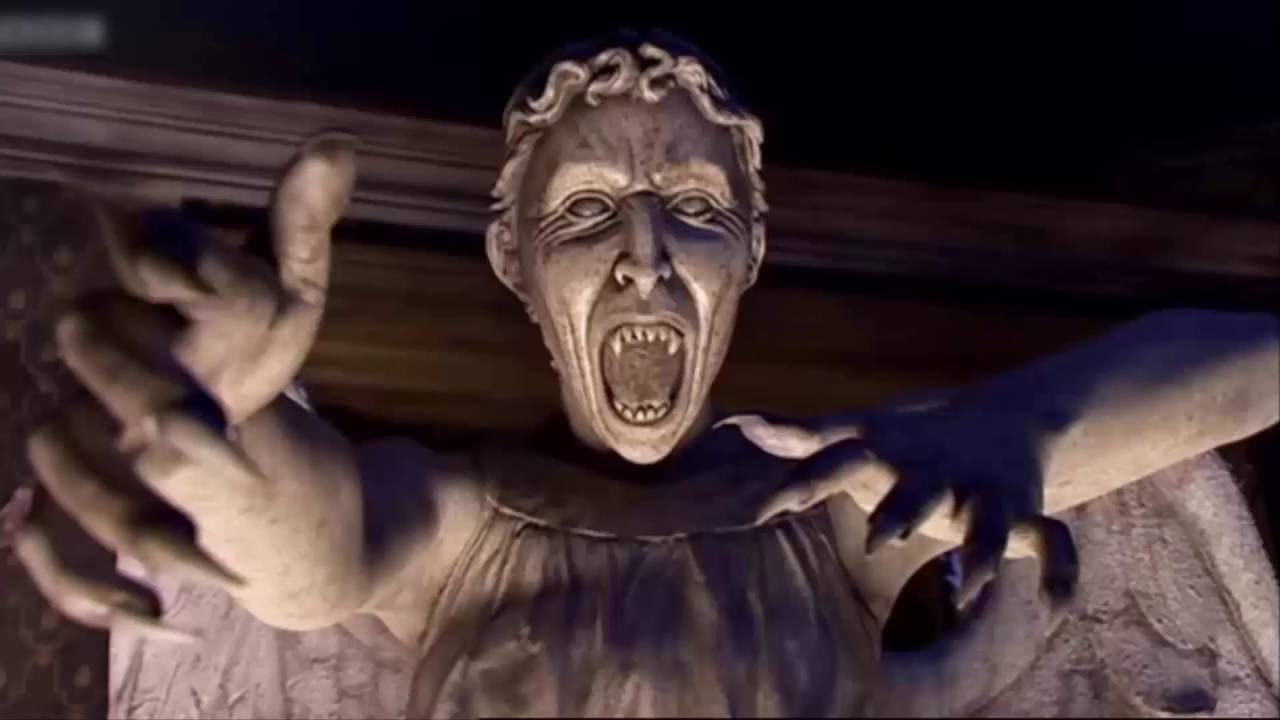When we started this podcast and I took on the task of writing our product reviews, I have to admit I didn’t always have the best handle on things. I’m a player at heart; I rarely sit on the GM side of the screen. So if a book didn’t have obvious “toys” for players, it left me a little stumped. Well, we’ve been at this for a few years now, and I like to think I’ve evolved and matured, and I have a better handle on things now.
I say all of this as backdrop as we step into the world of The Mwangi Expanse… both the setting within the Pathfinder world, as well as the newest Paizo hardcover release that tells us all about it. As a setting book, it’s mostly designed as an “idea factory” for GMs to build adventures around, and as such, you don’t tend to have as much player-facing content. And you know what… that’s OK. Not everything HAS to be for the players. Sometimes your GM needs a little love too, and players reap the benefits later in the form of the adventures they get to go on.

I feel like the first thing that leaps out is the sheer scope of the book itself. Think about it: this is a full hardcover release, on par with the Bestiaries and the Inner Seas World Guide itself, just dedicated to one area of the map. Paizo certainly never did anything of this magnitude in First Edition; maybe you could argue that the Starfinder Pact Worlds book was in the ballpark of this effort, but that’s like… 10 or 11 planets compared to one relatively small corner of the map. That level of commitment allows them to really go on a deep dive, as you’ll see when I get into the content in more detail.
Another thing I feel like I want to mention is Paizo’s commitment to doing inclusivity the right way with this book. When you’re mining real-world cultures for ideas for a fantasy setting, it’s a delicate balance. On the one hand, you don’t want the treatment to be so shallow that it comes across as meaningless façade, but you also want to use those cultural elements respectfully and not indulge in cheap stereotypes or otherwise make it awkward. (And in any scenario, casting Tilda Swinton as an Asian man is off the table. Circulate a memo.) I wanted to specifically give Paizo credit for bringing in writers of color to participate in every phase of the book’s creation, using their perspectives to inform this book in a meaningful and respectful way.
As a setting within the Pathfinder game, the Mwangi Expanse is a jungle biome to the south of the Inner Sea region; if you want to compare it to a real-world setting, sub-Saharan Africa wouldn’t be too far off the mark. It’s a region teeming with exotic wildlife and magical forces; even the established cities of the Mwangi Expanse have to contend with primal and magical forces knocking at their back door as a fact of everyday life. It’s also a region with its own people, history, and culture, distinct from the goings-on up north in the Inner Sea region. It’s a land that manages to be familiar in some ways but drastically different in other ways.

Let’s start with what I’m sure is a vastly oversimplified history of the Expanse. It may be helpful to set the table for some of the things we’ll be discussing later.
In the wake of Earthfall, the Mualijae elves were the dominant power in the region, but they expended most of their power battling a dragon god named Dahak. They were able to defeat and imprison Dahak, but their numbers were reduced, and those who remained splintered into three main factions. This gave humanity a foothold and an opportunity to grow, led by Old-Mage Jatembe and his Ten Magic Warriors. The town of Nantambu, originally a place for the Ten Magic Warriors to meet and exchange knowledge, became a full-fledged city where the warriors started the Maagambya school of magic. Both exist to this day as a beacon of magical knowledge in the region. For a while, the leadership of the Magic Warriors allowed humanity’s influence across the Expanse to grow, and new cities and nations were created. Eventually, a threat arose in the form of the demon lord Angazhan and his corrupted human leader, the Gorilla King. Angazhan and his demon-worshipping followers created the city of Usaro as a base of operation and began to expand across the expanse until they were eventually fought and defeated by the orcs of the region, the Matanji, with the assistance of one of the remaining elf factions. In more modern days, the Expanse faced attempts at colonization from foreign powers (most notably Cheliax), and more recently (when Aroden died), a never-ending storm called the Eye of Abendego flooded the northwestern countries of Lirgen and Yamasa and drove those people out of their homelands.
Like I said: vastly oversimplified. And don’t worry… there will not be a quiz. But it gives you some of the highlights of how the region was shaped, and I’ll probably reference pieces of it as I discuss other parts of the book.

One thing that’s interesting is the mix of ancestries you’ll find in the Mwangi Expanse, whether it’s journeying there as an existing character or starting a new campaign there. Some ancestries that are fairly exotic for the Inner Sea, such as lizardfolk and kobolds, are much more common, while some of the Inner Sea staples (gnomes and goblins, to pick two examples) are hardly seen. Even amongst some of the shared ancestries, such as elves and orcs, there are differences in their evolutions; and of course, there are also ancestries that are unique to the Mwangi Expanse.
To use elves as an example, there are three different flavors of elves. All three are descended from the original Mualijae elves that came to the region thousands of years ago. They were presented a prophecy of fighting against great evil, but chose different interpretations of what that meant, and they fractured into factions over their different interpretations. The first are the scholarly Alijae elves who chose to gather as much knowledge as possible, so they moved their base of operations to the outskirts of Nagisa, a demon-corrupted elf city, so they can try to reclaim its secrets. There are also the warrior Ekujae who are taking it literally and developing their military prowess to fight any threat that arises (including helping the Matanji orcs fight the demons). Lastly, there are the Kallijae who think the real evil they have to fight is within, so they’re all about keeping to a rigid code of ethics and personal discipline.
Similarly, the Matanji orcs are a combination of familiar and new. Yes, they’re still a people known for their strength and military prowess, but they’re not treated like warlike savages; the people of the Expanse respect the orcs for protecting everyone else from the demons and their worshipers. As such, Matanji are generally well-regarded and welcome in polite society, and some even rise to leadership positions. Heck, remember the Yamasan people (one of the two countries I mentioned that got flooded by the giant storm)? They’re mostly farmers, and a lot of them now live under the protection of the Matanji and grow their food for them. A demon-hunting army travels on its stomach, after all…
And just think…. I haven’t even mentioned the dwarves (Mbe’ke) who gave up living underground, befriended cloud dragons, and decided beards weren’t fashionable! There are also nomadic jungle dwarves (Taralu) and halflings (Song’o), so most of the “classics” are available here in some form.

As far as ancestries that are brand-new to the Mwangi Expanse, we have six (and yes, I realize I’m falling back on my fascination with “toys for players” here):
- The Anadi are spider-people, though they can have both spider and humanoid forms, they can shift between. As you’d expect, most of their ancestry feats have a spidery theme: shooting webs, wall-crawling, etc.
- The Conrasu is a bit of an oddball – it’s a shard of energy that grows an exoskeleton out of wood to serve as a body. It has some similar powers to a leshy, but something distinctly otherworldly and non-humanoid about it. So… “leshy construct” is kind of in the ballpark for what it feels like?
- Gnolls are familiar to old-school players and fairly easy to describe for newcomers – hyena-based humanoids. Most gnolls are traditionally evil, but when the largest gnoll tribes were defeated, some moved to the human settlements and began their lives there. I love the footnote here that some gnolls eat their own dead and fallen enemies. WHAT’S A LITTLE CANNIBALISM AMONG FRIENDS?
- Golomas don’t have an existing real-world comparison, so I’ll just describe the artwork: they’re bipeds with a horse-like face, but their face looks like a mask with eight gelatinous eyes. The most interesting thing about the goloma is it LITERALLY has eyes in the back of its head as well, which gives it benefits to perception and such.
- LITTLE FROGGIES. Again, long-time players should know what to expect here. Certainly the cutest entry of the bunch. Sign me up for the feat that lets you deliver touch-attack spells with your tongue!
- Human-adjacent, but their bodies have little quills, like a porcupine. At low levels, can be used for defense (attack me, you get poked back), but later feats let them be used as melee weapons or even shot at an enemy at range.
I feel like although they’re not a character ancestry, I should mention the Charau-Ka as well. They’re humanoids based on…. baboons, mandrills, maybe?… and they tended to be the footsoldiers of the demon-worshiping armies. So while you can’t be a Charau-Ka character (for now?), I suspect you’ll be running into a lot of them as adversaries if you go on adventures in the Expanse.

Once ancestries are dispensed with, we also get to meet a few of the gods worshiped in the Mwangi Expanse, although many of the more traditional Pathfinder gods have also made their way to the Expanse. One of the most interesting here is Walkena, the raised undead corpse of a former child ruler of the city of Mzali. The book itself diligently avoids using the word “lich”, but he’s kinda “lich-esque”. On the one hand, he’s evil and a bit of a tyrant, but on the other hand, he preaches a message of uniting the people of the Expanse and throwing out foreigners, so despite his cruelty, he’s got a certain popularity amongst the people. So there are some interesting layers there. I also personally like Lubaiko, a fire god who’s a bit of a practical joker and not above giving her own followers a hotfoot for a laugh. My kind of deity.
The next section of the book is the largest and covers the geography of the Mwangi Expanse. Let’s just say there’s just too much of it to go into ALL of it in detail, or we’d be here all day. This is where the deep dive starts REALLY paying off.
The general construction is that it breaks the Expanse down into smaller regions (nine in total), and then lists specific story hooks and points of interest that a GM could use to build an adventure around. So for example, the Sodden Lands are a rainy, marshy area to the far northwest (including the lands wiped out by the Eye of Abendego), and one sample of the locations a GM can play around with is Fliptown, a floating casino run by a grippli named Flip The Lucky. Or if you’re feeling more ambitious, Ng’s Well is a gateway to the First World that’s large enough to sail a ship through. The story elements can be anything from a whole city, to a specific building, sometimes even a specific NPC who might give the players a mission to take care of. Add it all up and there’s NO shortage of interesting content here.
I do think the Lake Ocota region is going to be a place that’s going to be featured prominently in adventure paths. It’s pretty close to the center of the Mwangi Expanse, and several rivers feed the lake, so you can get there from pretty much any starting point. There’s a direct water route to the magic city of Nantambu, and the demon city of Usaro is right on the southern banks of the lake. In short, Lake Ocota just FEELS like a place where history is happening (why yes, I do use “Hamilton” references even when it’s kind of forced and awkward). Also, there’s a 300-foot tower of white rock called the Spire Of Destiny in the center of the lake. I mean… come on… you don’t call something the “Spire of Destiny” and then NOT invite players to start snooping around it. Of course, every boat that’s gone out there has disappeared or come back empty, so… snoop carefully, is all I’m saying.

In the next section, after the geographic regions, the major cities of the Mwangi Expanse are given similar treatment. These writeups start with a one-page quick-reference (population, trade goods, etc.), another one-pager with a map, and then each city gets a similar treatment to the region level, where the book describes life in the city, the leadership structure, and again… points of interest in each city that could feed into an adventure.
We have Bloodcove and Senghor, which are two sides of the same ocean-faring coin – they’re both major ports, but Bloodcove is a safe haven for Free Captains (aka pirates), while Senghor is zero-tolerance in that respect and home to most of the “legitimate” trade with the outside world. Kibwe is a trading town that sits at a major crossroads toward the eastern side of the region; life pretty much revolves around the central market there. Nantambu is the center for all magical activity in the region and the home of the Maagaymba. One of my favorites is Jaha, a city where the residents just vanished a few years ago… so displaced Lirgeni and lizardfolk moved in. So you’ve got this city where there’s a mystery about the locals disappearing, you also have an interesting dynamic where the Lirgeni and lizardfolk have to make peace with the fact that the lizardfolk were formerly kept as slaves. Also, there’s some weird spirit activity going on that makes it impossible to sleep at night without having bad dreams, so the city’s entire sleep schedule is inverted, with people sleeping during the day and city life being mostly nocturnal. (THAT CAN’T BE ANYTHING BAD.)
Then again, the jungle city of Osibu is the home of Dimari-Diji, an ancient arboreal who LITERALLY survived Earthfall and is currently guarding the Nemesis Well, a portal to… nobody really knows what. You want a quest-giver who Knows Some Things, I suspect he’s your huckleberry.
One of the most interesting areas is the southern colony of Vidrian. It’s a place where one is forced to reckon with issues of our own real-world colonialism through the prism of gaming. Until recently, Vidrian was Sargava, a Chelaxian colony — one that was OK with using slave labor, BTW — but the ruler of Sargava backed the wrong horse in Cheliax’s civil war, so all their support from home dried up. The Sargavans tried to maintain their hold by allying with pirates, but a resistance movement eventually broke through and won independence to create the new nation of Vidrian. So now you have this country trying to figure out what the new normal is. You have the Vidric people, many of whom were former slaves, taking over as the ruling class, and the Sargava, the descendants of the Chelaxians existing as a minority who is anywhere from seriously mistrusted to outright hated. There are laws that protect them from violence, but the Sargavans are adapting to a new life where they’re persona non grata in many places… across ALL of the Expanse, not just within Vidrian.
Pretty heady stuff for a game where you’re usually bashing skeletons on the noggin.

And look… maybe you don’t want to play around with those issues because they make you uncomfortable or just don’t resonate with you, and… that’s cool. Play around one of the dozens of OTHER story hooks available in this book. I’m sure the frog casino will be a pretty light-hearted romp. The point is that others might WANT to play within those themes and tell those stories, and I’m glad the tools exist for them to do so.
The last section is a mini-bestiary… maybe a dozen or so creatures unique to the Mwangi Expanse. Some of these are antagonist humanoids, such as the aforementioned Charau-Ka, but you also have some wild animals here as well. Because, you know… in case a giant hippopotamus wasn’t enough, here’s a giant hippo that can cast fire spells (the maliadi). And if you live in a state where weed is legal, check out the grootslang… it’s got an elephant head, but its body quickly gives way to a snake’s body. Is it gargantuan? Of course. Can it swallow you whole? Need you even ask?
As I sit down to write a final analysis of this book, I have to admit I was really impressed. And this is coming from someone who’s usually indifferent toward the Paizo books that aren’t player-facing. Even so, I found myself drawn into this new corner of the world, far more than I expected to be. I think they managed to strike a nice balance between something that’s still familiar as Pathfinder while offering all sorts of new mysteries to explore that don’t automatically circle back to the same old lore we’ve been kicking around since First Edition. Our group doesn’t do a lot of homebrew content, so we probably won’t visit the Mwangi Expanse until there’s an adventure path that takes us there, but after reading over The Mwangi Expanse, I’m definitely looking forward to taking that journey.
Make sure to read Jason’s review of the Pathfinder Second Edition Core Rulebook, as well as his review of the Pathfinder Advanced Player’s Guide, Pathfinder Lost Omens: Legends, Pathfinder World Guide, Character Guide, Gods & Magic, Gamemastery Guide, Bestiary 2, and Bestiary 3.
If you enjoyed this review make sure to check out our Pathfinder Adventure Path: Agents of Edgewatch Podcast and our Pathfinder Adventure Path: Three Ring Adventure.

